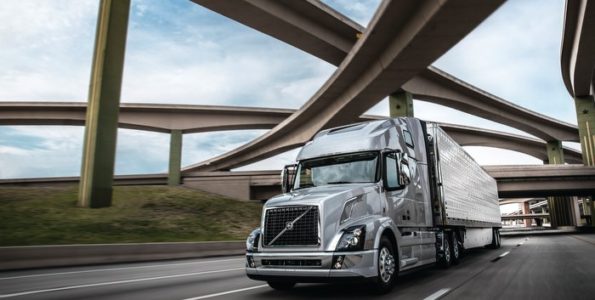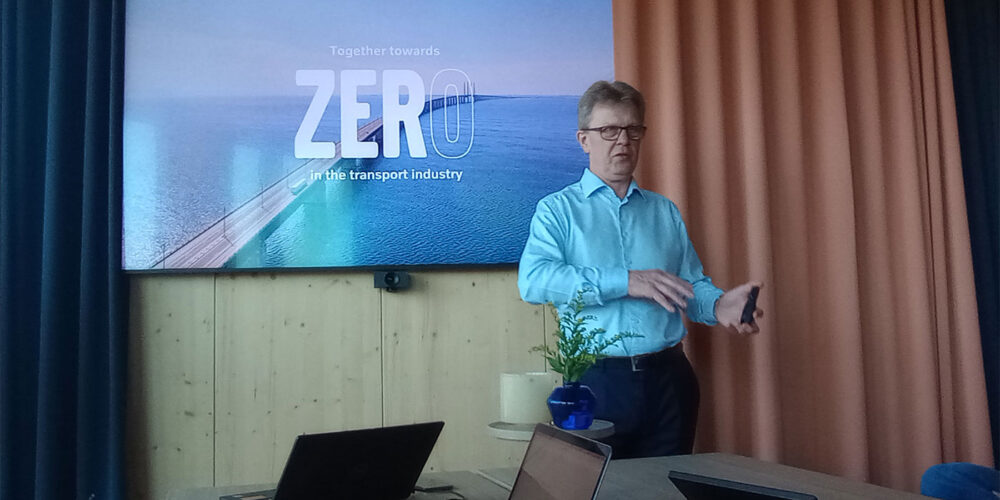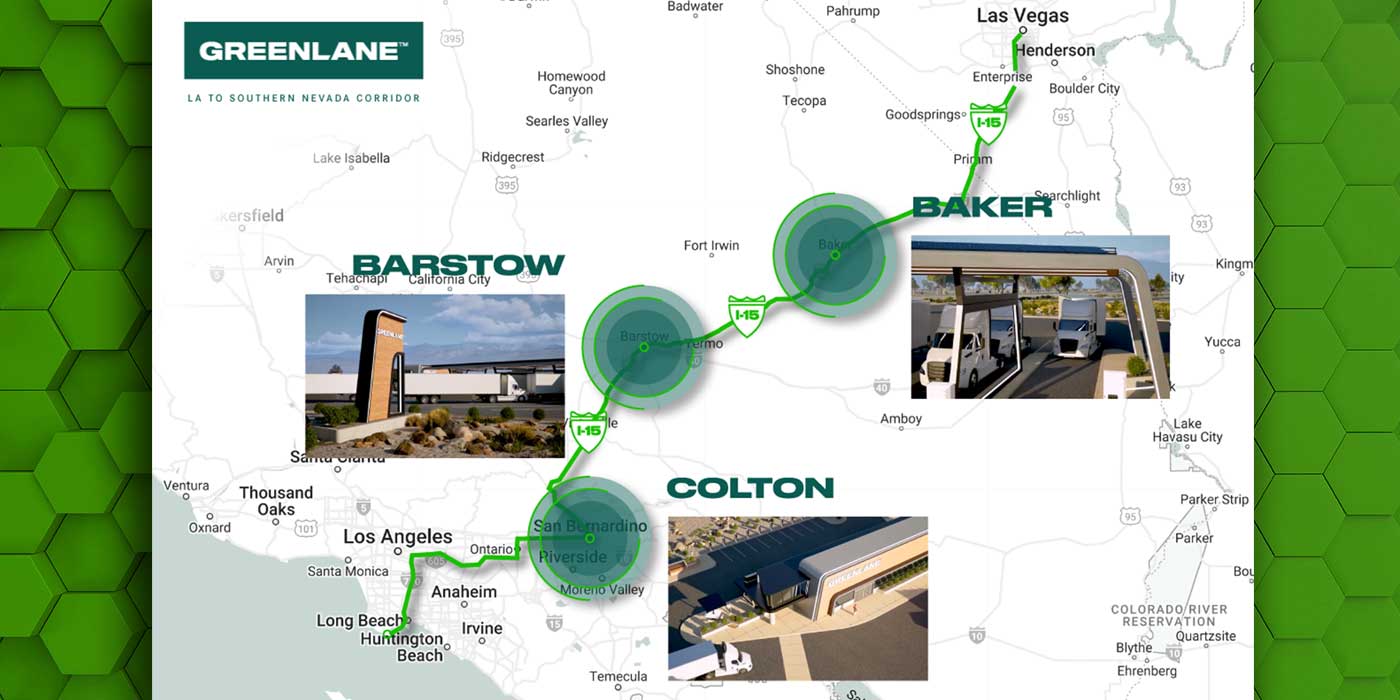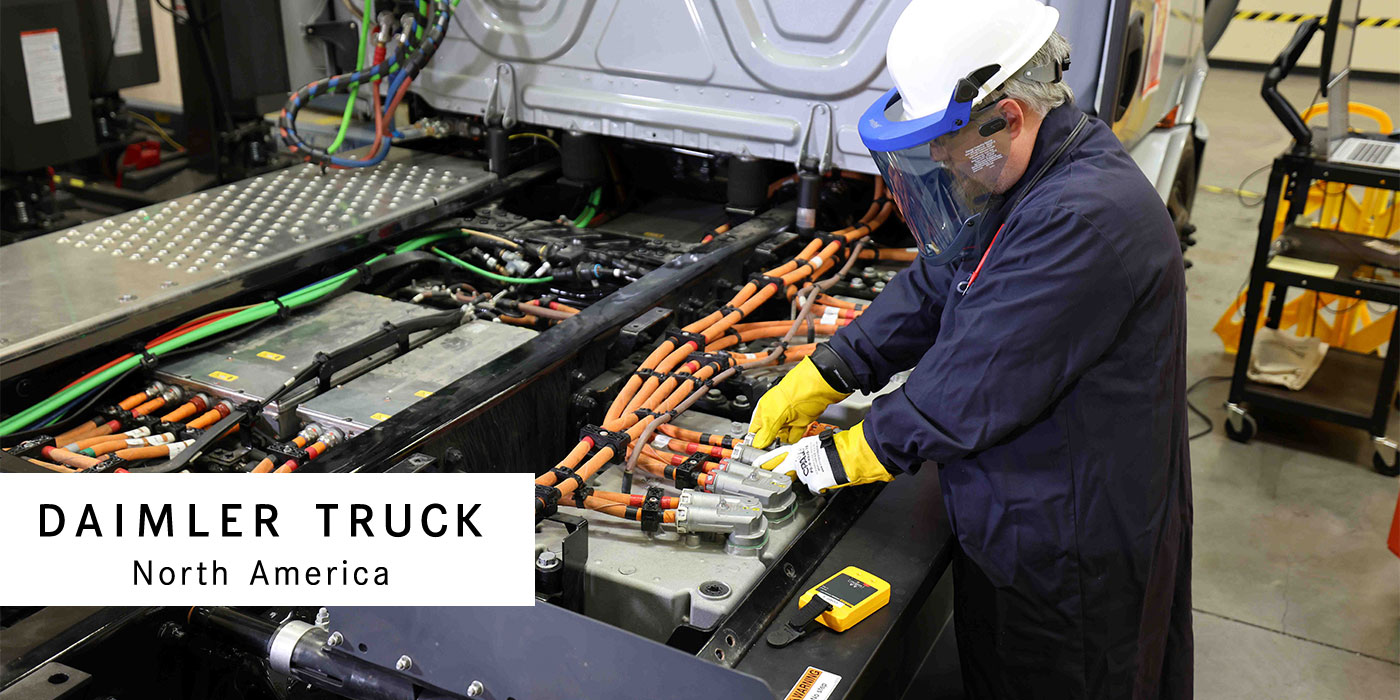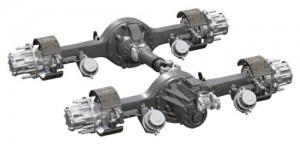
Moore goes on to say that fleets are looking for versatile drivelines that fit their needs. Some fleets require their trucks to take on a pickup and delivery regional haul role during the day, and run line-haul steady state interstate operations at night. These fleets may also require 11R22.5 tires.
“Volvo introduced ‘XE Fleet,’ a modified version of the traditional XE package that combines 11R22.5 tires with a 2.79 rear axle ratio to produce an engine rpm of 1,117 at 62 MPH, which works great for this application,” Moore says. “If fleets are looking for a little more performance, the 2.79 ratio can be substituted with a 2.85 rear axle ratio to produce 1,141 rpm at the same speed.”
If fleets are empty or light on return trips a large percentage of the time, Volvo offers Adaptive Gearing, which Moore explains locks out overdrive when the vehicle is loaded based on rear suspension air pressure input.
“Because we are always light while in overdrive, we can use a taller 2.47 rear axle ratio to allow an engine speed of 1,068 RPM,” Moore says. “When the vehicle is loaded, input from the air suspension confirms and locks out 12th gear. The Volvo I-Shift automated manual transmission is now running in 11th gear, which is direct drive, and offers efficiency and performance when loaded.
“Downspeeding will continue to trend into the future because of the fuel efficiency returns it provides when placed in the right application,” Moore concludes. “It’s not for everybody, which is why we will continue to build drivelines that fit all of our customers’ needs in the future as well as we do today.”
Faster axle ratings
“Downspeeding can be supported with current 6×4 axle configurations. Faster axle ratios (lower numeric) as low as 2.26:1 are currently available to reduce engine RPM at highway cruise speed to improve fuel efficiency and reduce greenhouse gas,” says Steve Slesinski, director of global product planning for Dana Holding Corp. “As a general rule, for every 100 rpm slower the engine operates at highway cruise speed [i.e., 55, 60, 65 MPH] the expectation for a 1% improvement in fuel efficiency is anticipated. Even at today’s low diesel fuel costs of $2.60 per gallon, this could mean approximately $440 a year in savings for fleets running 120,000 miles per year.”
Please note, these faster axle ratios also require the appropriately specified axle model and driveshaft to accommodate the higher input torques to properly enable engine downspeeding while meeting high-cycle and low-cycle component life expectations for the fleet.
Drivetrain strategies

According to Meritor’s Karl Mayer, director of product line management for rear axles, choosing the right axle depends on vehicle application for example whether it’s line-haul or a city delivery type of vehicle. “For a truck used only for line-haul or long haul operation, a fast axle ratio like a 2.47 or 2.28 coupled with a direct drive transmission may be a good strategy,” advises Mayer. “However, if the truck is also being used in city delivery or pickup applications and delivery service, then using a slower drive axle ratio like a 2.85 with a 0.80 overdrive transmission or a 3.36 ratio with a 0.74 overdrive transmission is a much better choice. Effectively, a slower axle ratio and an overdrive transmission will give you the same overall top gear ratio without exposing the drivetrain to very high start-up torque events or reduced component life due to the greater amount of torque that is being carried through the drivetrain when fast axle ratios are used. Additionally, direct drive transmissions could provide the end user about 1% more efficiency than overdrive transmission due to reduced parts requirement.”
He goes on to note that more than 100 Meritor DriveForce representatives are assisting the customer on a regular basis and communicating their feedback immediately to the manufacturing facility.

